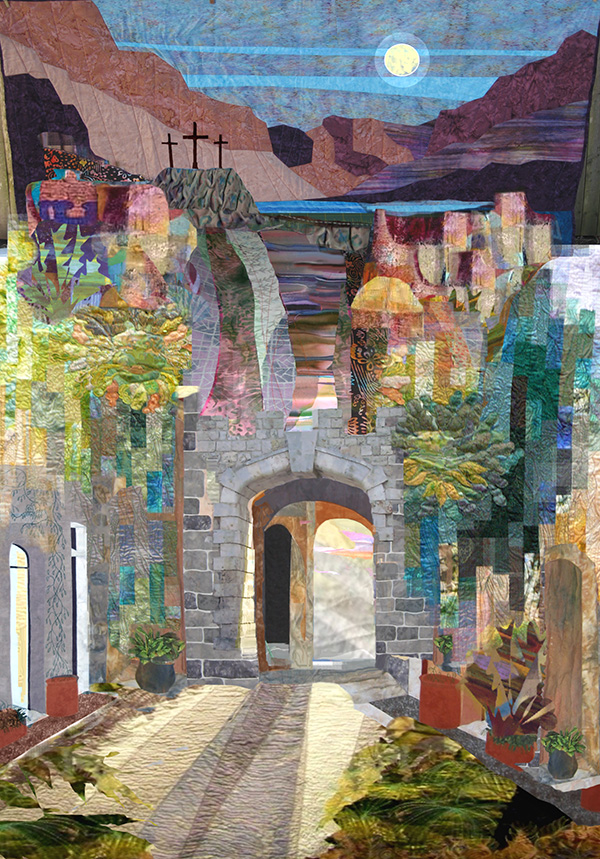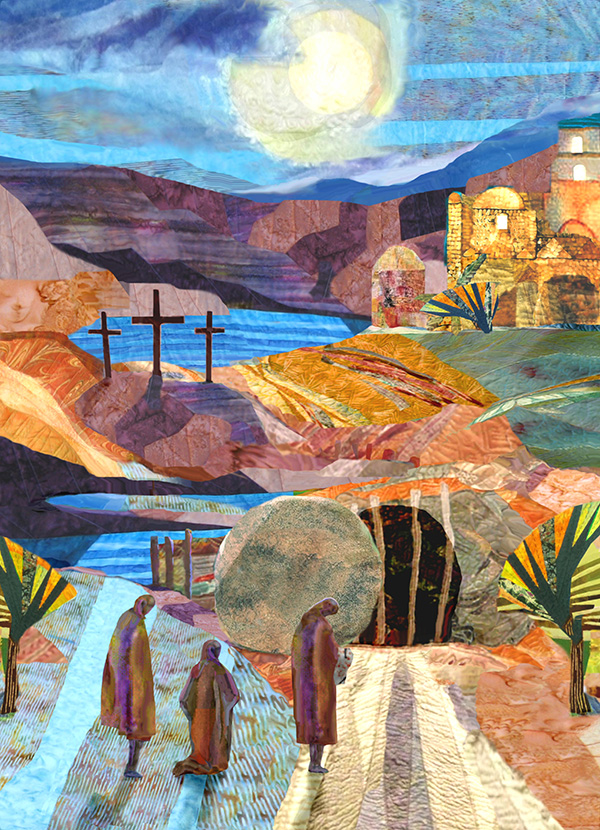Subtotal: $
Checkout
The Path from Death to Life
Our Christian faith stands or falls on the belief that Christ destroyed death and brought about new life.
By Cardinal Kurt Koch
March 30, 2024
“In the midst of life we are surrounded by death.” This short statement encapsulates an undeniable facet of human experience – one that confronts us again and again, especially whenever we have to part ways with people who are near and dear to us. More specifically, it expresses a stark truth about our own journeys: the fact that each of us is continually traveling the path that leads from life to death.
The Dark Side of Holy Saturday
This truth confronts us even – perhaps especially – at Easter, the feast of Christ’s resurrection. The Easter Gospel (John 20:1–18) opens by telling us that “early in the morning, while it was still dark,” Mary Magdalene came to Jesus’ tomb. There she saw that the stone had been moved from the entrance of the tomb, and encountered two angels in white robes who asked her why she was weeping. Her answer was as simple as it was sad: “My Lord has been taken away, and I do not know where they have laid him.” Although the woman is at the center of the Easter Gospel, she has not yet crossed the threshold to Easter itself. She is still living in Holy Saturday, as it were, and looking for Jesus among the dead.
Doesn’t this woman represent us humans – including us Christians – in today’s world? We may live with faith in the light of Easter; and yet, it is the aura of Holy Saturday that is omnipresent and effective in our lives. Holy Saturday reflects our human nature: confidently approaching Easter, but nevertheless needing to wait for it, since it has not yet come.

Michael Torevell, The Road to Calvary, mixed media, digital, 2014. Used by permission.
This is not only a matter of human experience generally; it also belongs to the Christian faith. As the day Jesus rested in the grave, Holy Saturday is the day of God’s concealment and silence in history. In this sense, it is also a day that has reoccurred again and again – a bloody reality that sometimes takes the form of war, as it did in the last century, with two cruel global conflicts that cost thousands upon thousands of lives. In today’s world, with war once again affecting millions, we can sense another great Holy Saturday.
Even after the fact of Easter, Holy Saturday remains the day of God’s hiddenness, something we experience repeatedly, especially in contemporary society, where the divine is so often silenced. It is a reminder of our unredeemed state – one that continues even after the Resurrection. This is the dark side of the day, as Mary Magdalene experienced it.
The Bright Side of Holy Saturday
And yet, Holy Saturday also has a hopeful and joyful aspect. It comes to expression in the Apostles’ Creed, which professes our belief that Jesus died and was buried and descended into Hades, the realm of the dead. In order to understand the seeming incongruity, it is necessary to consider what happened there. Human experience tells us that such a place must be one of utter abandonment and loneliness, where every human relationship has come to an end and even love is as good as dead. But Holy Saturday holds out a promise – that Jesus descended into this realm precisely in order to bring its inhabitants into the presence of God and his love.
Yes, Jesus traveled to the place of greatest loneliness – a place completely bereft of any human relationships – and stirred the souls and limbs trapped by rigor mortis with the warming love of God. He transformed their grave into a place of new life. To quote Benedict XVI’s profound interpretation of this mystery, “In the realm of death, the voice of God was heard. The unthinkable happened: Love penetrated it.” In this sense – and this is Holy Saturday’s bright side – in entering Hades, Jesus Christ brought about the dawning of Easter Sunday while still in the midst of Easter Saturday.
There is another spiritual mystery that Easter makes visible: the reassuring transformation of the fundamental truth of human existence addressed above. The promise of faith in the Resurrection lies in the courage to reverse the hard truth of the old saying that, in the midst of life, we are surrounded by death – and to point to an even greater reality: that ultimately, even within that death, we are surrounded by a greater life – the liberating and eternal life of God. Thanks to Easter, we humans are not only walking our earthly path from life to death, but also – more significantly – the path of faith from death to life.
Faith at the Juncture of Death and Resurrection
By dying, Christ destroyed death and brought about new life; and our Christian faith stands or falls on believing in this event. Writing to the church in Corinth, whose members apparently could not accept the idea that they too were subject to the law of resurrection, the apostle Paul shared his own convictions on the subject with great clarity: “If the dead are not raised, then Christ has not been raised either. And yet, if Christ has not been raised, then your faith is useless, and you still remain in sin” (1 Cor. 15:16–17). It follows that Christ’s resurrection has a bearing on a most urgent aspect of Christian faith and renewal in two respects.
First, Easter demands that we take our faith in God very seriously. What kind of God would he be, if he had left Jesus to die – Jesus, the beloved Son who proclaimed his Father’s boundless love for human life? And what kind of God would he be, who remained faithful to the believers who followed his Son and trusted in his promise of abundant life only for the relatively short span of their lives on this planet, but then capitulated, as it were, when confronted with their caskets? He would be a pathetic idol, indeed – hardly the God of compassion that the Christian faith proclaims, and whom Jesus tried to introduce to the Sadducees (who disavowed the idea of resurrection) with these words: “Moses already hinted at the resurrection of the dead in the story of the burning bush, in which he calls the Lord ‘the God of Abraham, the God of Isaac and the God of Jacob.’ Yet he is not a God of the dead, but of the living; for in him, all are alive” (Luke 20:37–38).

Michael Torevell, Who Will Roll Away the Stone for Us, mixed media, digital, 2018. Used by permission.
Second, our Easter faith also represents hope, both in terms of its necessity and its sustainability. What would our hope be worth if it could only keep us afloat to the end of our present earthly lives – if its power consisted solely in bringing us safely to the terminus of our existence; that is, to a place in the grave? If that were so, we would be, as Paul puts it, “more miserable than all other people” (1 Cor. 15:19). Christian hope, however, has far greater staying power. It proves itself by standing the test of time even beyond the grave. The infinite love of God desires that every human being should live eternally, and this is made possible by virtue of the resurrection of Jesus Christ from death into new life – life in God.
Easter Resurrection as a Form of Baptism
Each of us is eligible for a share in this new life of God through baptism, whose meaning and origins are related to the Easter Vigil. Just as we celebrate Christ’s journey, on this night, from the place of death to the place of resurrection and new life, so baptism, which symbolizes crossing over from death to new life in Christ, implies participation in this transformation. Paul compares the ritual immersion of a candidate for baptism as immersion in the abysmal waters of death, and as an act of solidarity with Christ, who himself was submerged in its dark waters. And Paul sees the Paschal rejuvenation through the bath of baptism as rebirth to a new and imperishable life – again in solidarity with Christ: “Just as Christ was raised from the dead by the glory of the Father, so we too should live as new beings” (Rom. 6:4).
The new life that proceeds from baptism unites us with all Christians, regardless of their denominational or congregational ties. For baptism, which is mutually recognized by all believers, is the foundation of ecumenism, and thus of every effort made toward the restoration of Christian unity. It is therefore a reminder that our proclamation of Christ’s resurrection is credible only if we consider the consequences of that resurrection for the church. The first of these consequences is visible in the establishment of the first ecclesial community, as described in the Book of Acts: “The body of believers was of one heart and one soul. No one called anything his own, but they held everything in common” (Acts 4:32).
The new life offered us at Easter waits for us to take hold of it as a source of energy for renewal in ecumenical and ecclesial life. But that renewal presupposes a unity among Christians that is first and foremost unity with Jesus Christ. Such unity is possible wherever no one insists on his own rights and property and goods, but regards them as belonging to all. Only when we turn to Jesus Christ, the crucified and risen one, together, will we find the deeper fellowship we yearn for with one another. This is the renewal of the Christian life that is granted us by the faith of Easter – faith in the resurrection of Jesus Christ.
Translated from the German by Chris Zimmerman.
Already a subscriber? Sign in
Try 3 months of unlimited access. Start your FREE TRIAL today. Cancel anytime.






